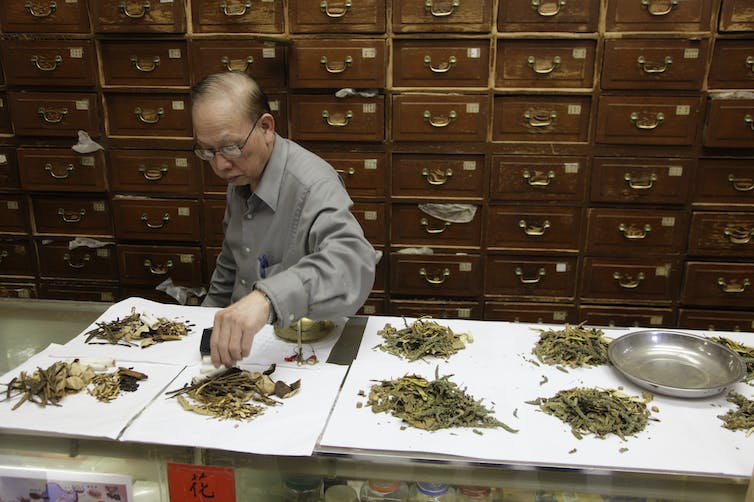For approximately 80% of the world’s population, the first stop after catching a cold or breaking a bone isn’t the hospital — maybe because there isn’t one nearby, or they can’t afford it. Instead, the first step is consulting traditional medicine, which cultures around the world have been using for thousands of years.
Traditional medicine encompasses the healing knowledge, skills and practices used by a variety of cultures and groups.
Examples of traditional medicine include herbal medicine; acupuncture; Tui Na – which is a type of massage originating in China; Ayurveda – which is an ancient system of promoting health through diet, exercise and lifestyle from India; and Unani – which is another ancient system of health from South Asia, balancing key aspects of the mind, body and spirit.
In recognizing that traditional medicine and other alternative forms of healing are critical sources of health care for many people worldwide, the World Health Organization and the government of India co-hosted their first-ever Traditional Medicine Summit. The summit took place in August 2023 in Gandhinagar, Gujarat, India.
August 2023 marked the WHO’s first global summit on traditional medicine.
The summit brought together health care policymakers, traditional medicine workers and users, international organizations, academics and private sector stakeholders from 88 WHO member states. Leaders at the summit aimed to share best practices and scientific evidence and data around traditional medicine.
As researchers interested in how to provide patients both in the U.S. and around the globe with the best possible medical care, we were interested in the summit’s findings. Understanding traditional medicine can help health care professionals create sustainable, personalized and culturally respectful practices.
Critical health care for many
In many countries, traditional medicine costs less and is more accessible than conventional health care. And many conventional medicines come from the same source as compounds used in traditional medicine – up to 50% of drugs have a natural product root, like aspirin.

An herbalist sorts herbs at the Great China Herb Company in Chinatown in San Francisco. Herbal medicine is one form of traditional medicine.
AP Photo/Eric Risberg
Many factors may influence whether someone chooses traditional medicine, such as age and gender, religion, education and income level, and distance to travel for treatment. Cultural factors may also influence people’s use of traditional medicine.
In China, for example, as more people have embraced Western culture, fewer have chosen traditional medicine. In contrast, many African migrants to Australia continue to use traditional medicine to express their cultural identity and maintain a cohesive ethnic community. A patient’s preference for traditional…



